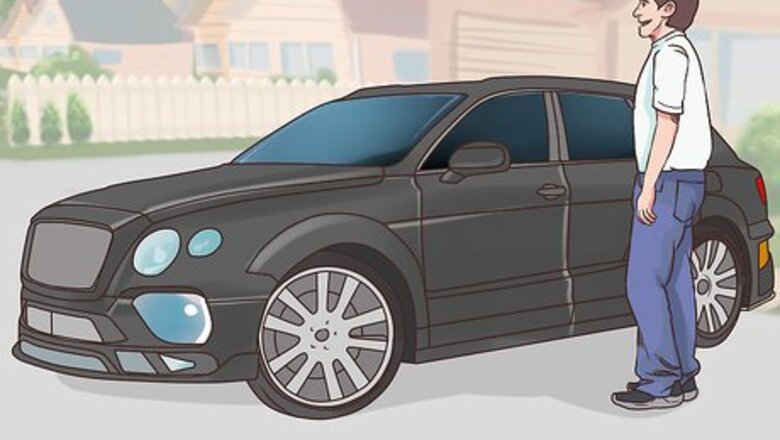
views
Lifting the Vehicle
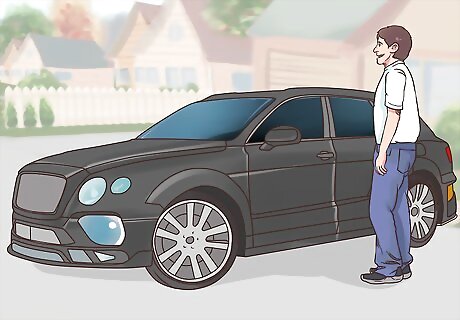
Park the vehicle in a flat area. For safety, move the vehicle to a solid surface, such as a concrete workshop or driveway. Choose a surface that is as even as possible. This is to give the vehicle stability and reduce the risk of an accident. Make sure the vehicle is not leaning to the side. Although rolling is a more frequent issue, an improperly-lifted car can also tip over.
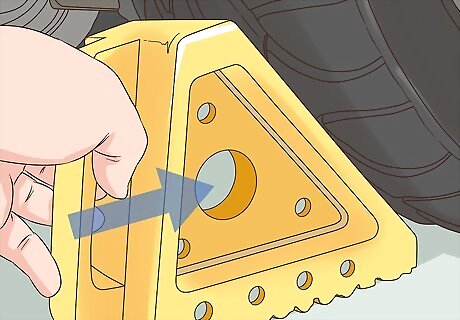
Chock 1 of the front tires. You will need a pair of wheel chocks, which are wedges that fit under tires to prevent your vehicle from rolling. Wedge 1 of the chocks under the front side of the tire. Then, wedge the other chock behind that same tire. You can purchase chocks, as well as any other parts you need, online or at most auto parts stores.
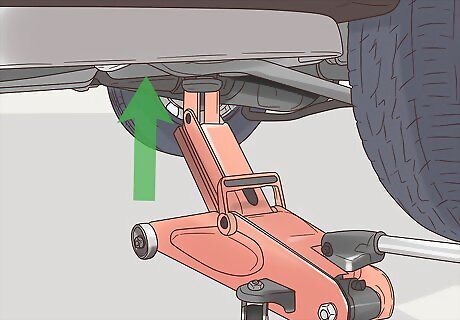
Raise the rear wheels with a floor jack. Slide the floor jack under the back end of the vehicle. Position it so the lifting arm is underneath the vehicle’s frame. Then, crank the jack until the tires are 3 in (7.6 cm) off the ground.
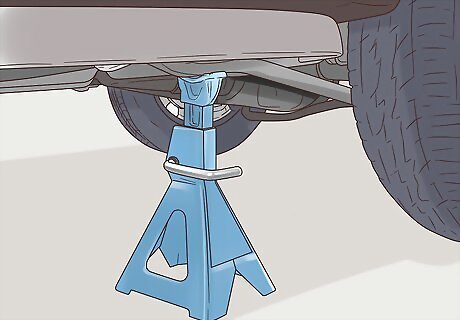
Place jack stands in front of the back tires. You will need 2 jack stands, 1 for each side of the car. Position the stands 1 in (2.5 cm) in front of the back wheels. The car’s frame should rest on top of the stands. Keep the jack stands the same height.
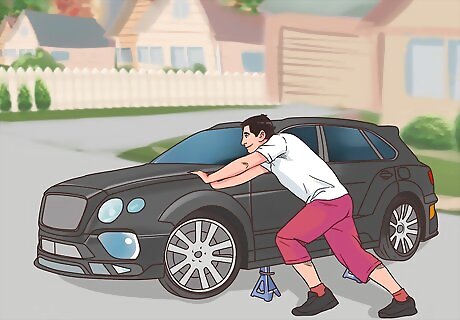
Push the car with your hand to make sure it is stable. Test the vehicle's stability on the jacks before attempting to remove the leaf springs. Gently push against the vehicle, looking for any signs of wobbling. If is is secure, it won’t move at all. If your vehicle seems a little unstable, you may need to lower it onto the jack stands more by lowering the floor jack. If you can’t secure the vehicle, check the jack placement. Make sure they are under the vehicle’s frame.
Removing the Old Springs

Wear safety glasses to protect your eyes. Protect yourself against dirt and rust with a pair of safety glasses. Wear the glasses anytime you go under the vehicle.
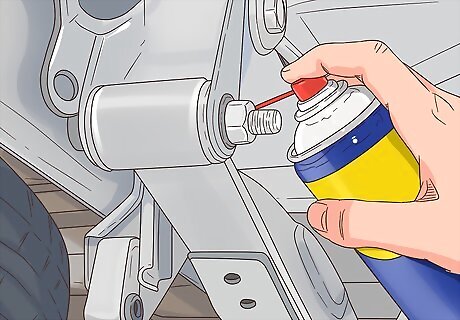
Soak the spring’s nuts and bolts in oil. To loosen the parts, spray penetrating oil on them. The oil helps prevent damage to these components as you remove them. You can use a penetrating oil like WD-40. The leaf spring is the long, flat, and slightly curved metal strip. It extends across the length of the tire. To loosen stubborn parts, let the oil soak in overnight. The oil cuts through any rust that may be holding the parts in place.
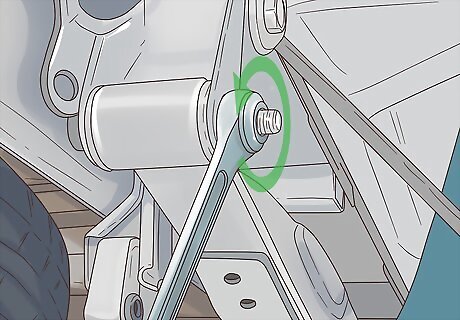
Remove the bolt from the shock pads with a ratchet wrench. Look for a triangular mounting bracket right beside the leaf spring. It will be on the axle and bolted to a bar that attaches to the car’s underside. Use a ratchet wrench to turn the bolts counterclockwise until you can remove the bracket. Set the bolts and other parts aside in a safe spot. You may want to label the parts so you know where to return them later.
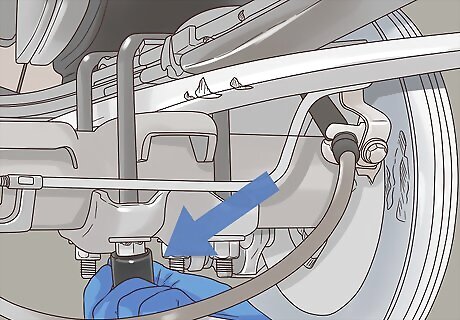
Loosen the U-bolts to remove them. The bolts will be right above the shock absorber bracket, hanging off the axle. Twist the nuts counterclockwise to drop the bracket off the bolts. Then, slide the bolts off of the axle. The bolts are horseshoe-shaped, so they are very distinct and noticeable next to the leaf spring. If you have an extra floor jack, placing it under the spring removes some of the tension, making the bolts easier to remove.
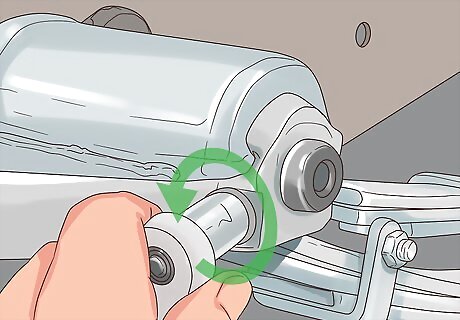
Unscrew the eyelet bolts on the spring’s ends. At the front end of the wheel, you will see a pair of bolts securing the leaf spring to the vehicle’s underside. Turn these counterclockwise to slide them off of the leaf spring. Repeat this to remove the bolts on the spring’s back end. The leaf spring will not be supported once you remove these bolts. Support the spring as you slide out the bolts to prevent it from crashing down.
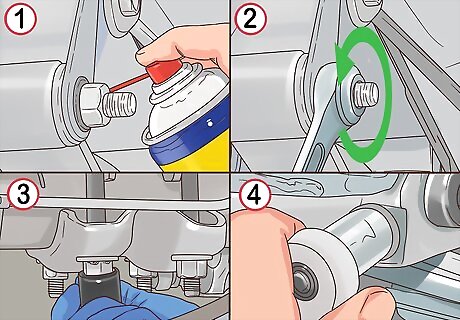
Repeat the steps to remove the other leaf spring. The second leaf spring is next to the opposite wheel. Remove it by undoing the brackets, bolts, and screws. Set them aside to save them for later.
Installing the New Springs
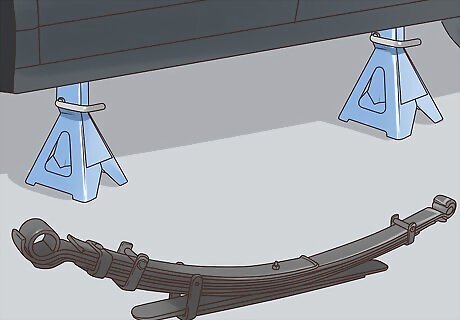
Position the new leaf spring under the mounting brackets. Bring the new leaf spring under the vehicle. Set it up so that it looks like a U with the lowest point in the middle. Check to make sure it spans across the tire, reaching the mounting brackets at both ends.
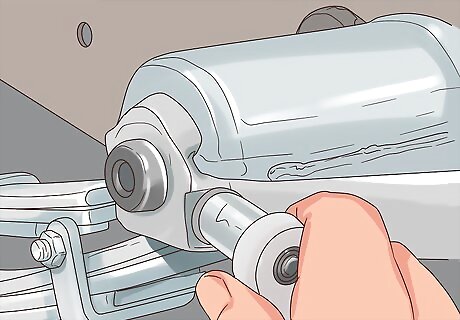
Screw the leaf spring to the front bracket with a ratchet wrench. Pick up the end near the front of the tire. The leaf spring fits in the lowest point of the bracket, which hangs down from the car’s underside. Slide the eyelet bolt into the bracket and spring, replacing the nut and twisting it clockwise to tighten it. The bolt should be positioned so the head points towards the car’s center. This prevents the bolt from popping out in case it comes loose.
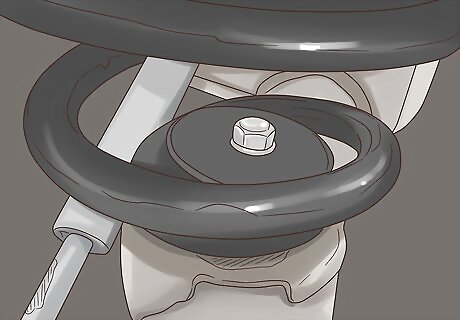
Attach the spring to the rear bracket. Fit the other end of the spring in the square-shaped bracket at the back end of the wheel. Replace the eye bolts and nuts, tightening them until the spring is suspended in place.
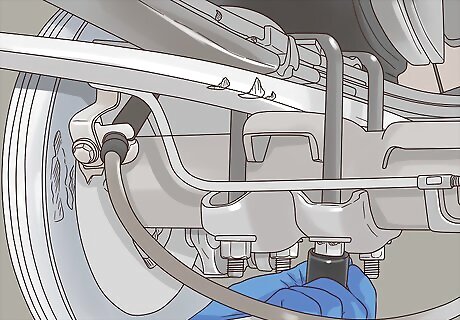
Install the U-bolts and shock pad. Hang the U-bolts over the axle, 1 on each side of the spring. Slide the shock pad brackets onto the ends of the bolts. Place the nuts underneath the pads and tighten them to finish securing the parts. You can loosely tighten the nuts for now to make sure the other components are placed correctly. If you do this, remember to tighten the nuts later.
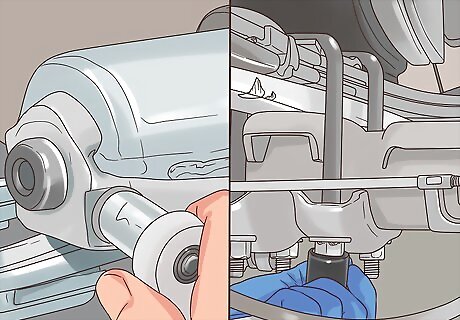
Secure the other leaf spring to the opposite tire. Repeat the steps to install the replacement spring on the other tire. Position the spring in the brackets and screw them in place. Make sure they are screwed tight enough so that the spring doesn’t wobble when you touch it. If the pieces seem loose or rattle when you drive the vehicle, readjust the bolts as soon as possible.
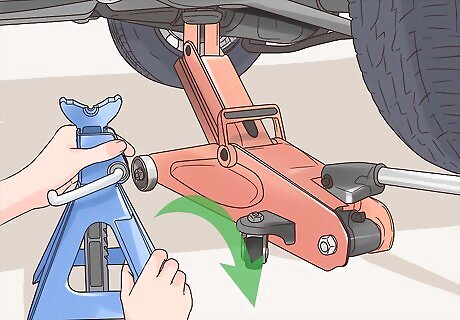
Remove the floor jacks. Use the floor jack to lift the vehicle off of the jack stands. When they are clear, slide the stands out from under the vehicle. Then, lower the floor jack to put the car safely on the ground with its new leaf springs.













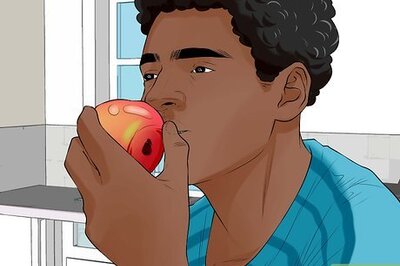



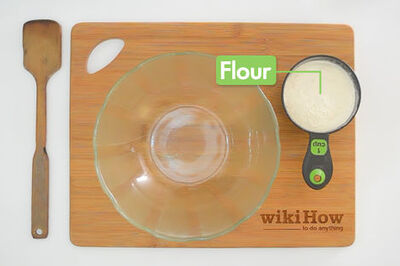


Comments
0 comment